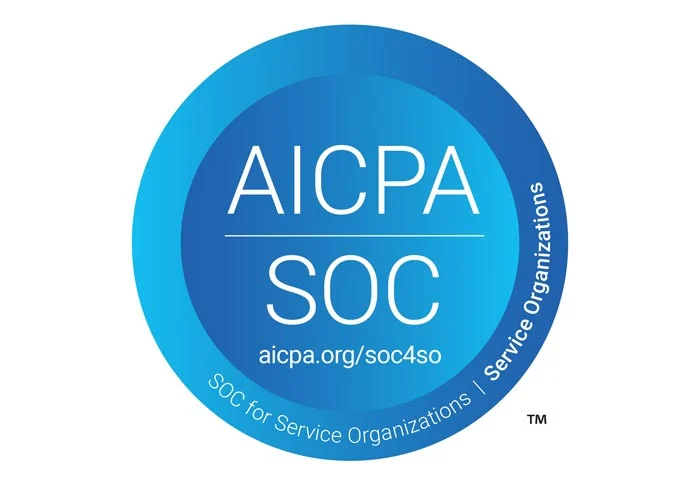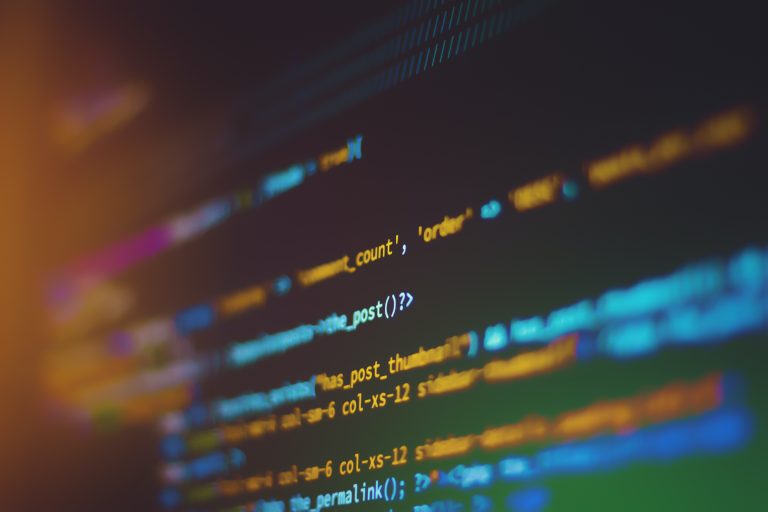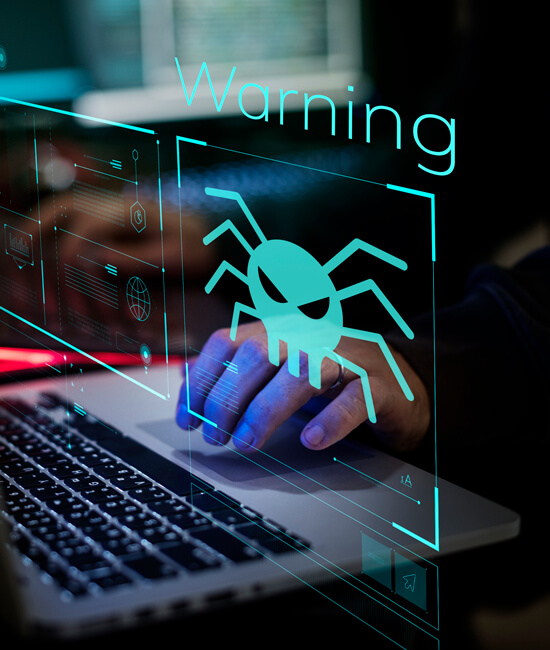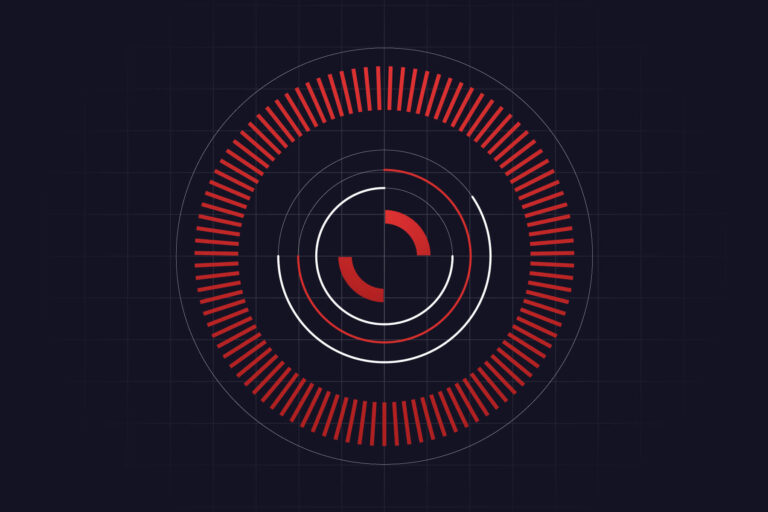Overview
SOC 2 was created by the American Institute of Certified Public Accountants (AICPA), a professional organization for certified public accountants in the United States. The AICPA developed the SOC 2 standard to provide a framework for evaluating the security, availability, processing integrity, confidentiality, and privacy of customer information that is processed by service organizations. The standard is designed to help service organizations demonstrate to their customers and stakeholders that they have implemented appropriate controls to protect sensitive information and meet the needs of their customers. The SOC 2 standard is updated regularly by the AICPA to ensure it remains relevant and effective in addressing the evolving needs of organizations and their customers. The current version of the standard is from 2017 with updated focus point from October of 2022.
Organizations that comply with SOC 2 standards demonstrate their commitment to maintaining the confidentiality, privacy, and security of their customers’ information. This can help build trust with customers and increase their confidence in the security of the services offered.
SOC 2 is especially important for organizations in the technology, financial, and healthcare industries, as these industries handle a large amount of sensitive information and are subject to regulations that require the protection of this information.
Overall, SOC 2 provides a framework for organizations to implement and maintain security controls, assess their effectiveness, and continuously improve their security posture. This helps organizations to minimize the risk of data breaches and protect the privacy of their customers.
Types of SOC 2 reporting
There are two types of SOC 2: SOC 2 Type 1 and SOC 2 Type 2.
SOC 2 Type 1 provides a report on the design of the controls in place at a service organization to meet the trust service criteria specified in the SOC 2 standard. This type of report focuses on the design of the controls and provides assurance that they are in place and operating effectively at a specific point in time.
SOC 2 Type 2 provides a report on the design and operating effectiveness of the controls in place at a service organization to meet the trust service criteria specified in the SOC 2 standard. This type of report focuses on both the design and the operating effectiveness of the controls and provides assurance that they are in place, operating effectively, and helping to meet the needs of the service organization’s customers over a specified period of time.
Step-By-Step Guide for SOC 2 Type 2
- Identify the security controls: This step involves determining the security controls that are relevant to your organization and the specific requirements of the SOC 2 Type 2 standard. These security controls can include physical security, network security, access controls, and data protection.
- Develop policies and procedures: Develop comprehensive policies and procedures to support the security controls identified in step 1. These policies and procedures should define the responsibilities of employees, provide guidance for managing and monitoring security, and outline the process for responding to security incidents.
- Implement security controls: This step involves putting the security controls and policies and procedures in place and making sure they are operating effectively. This may include implementing technical controls such as firewalls, intrusion detection systems, and encryption, as well as establishing procedures for access control and data backup and recovery.
- Monitor and assess controls: Regularly monitor and assess the effectiveness of the security controls to identify any weaknesses or gaps. This may involve conducting regular security audits and assessments, monitoring security logs, and performing vulnerability scans.
- Conduct a risk assessment: Conduct a risk assessment to identify potential threats and vulnerabilities to the security of the system. The risk assessment should consider both internal and external threats and assess the likelihood and impact of potential security incidents.
- Prepare for audit: Before the SOC 2 Type 2 audit, gather all necessary documentation, evidence, and other information to support the security controls in place. This may include security policies and procedures, technical documentation, and evidence of ongoing monitoring and assessment.
- Conduct the audit: Engage a qualified third-party auditor to conduct the SOC 2 Type 2 audit. The auditor will evaluate the security controls in place and the evidence provided to ensure they meet the SOC 2 Type 2 standard.
NOTE: Selecting the right auditor for your organization is crucial to the success of your auditing initiatives. At PTG we have vetted and worked with most auditing companies in the US, and can recommend the right auditing team based on your organization’s profile, size and scope of your project. For more information you can contact us through our live chat, or send us a quick email to [email protected] - Report results: The auditor will provide a report of the results of the audit, including any findings and recommendations for improvement. The report will also provide an opinion on the effectiveness of the security controls and whether they meet the SOC 2 Type 2 standard.
- Remediate findings: Address any findings identified during the audit and implement any recommended improvements. This may involve making changes to the security controls, policies, and procedures or enhancing the monitoring and assessment process.
- Maintain compliance: Continuously monitor and assess the security controls to maintain SOC 2 Type 2 compliance. Regularly perform risk assessments and security audits to identify any new threats or vulnerabilities and ensure that the security controls remain effective.
Who does the SOC 2 affect?
SOC 2 affects organizations that provide online services and store sensitive data, such as personal information, financial information, or healthcare information. This includes, but is not limited to, technology companies, financial institutions, healthcare providers, and service providers that handle sensitive information.
The SOC 2 standard is designed to provide assurance to customers and stakeholders that an organization has adequate controls in place to protect sensitive information and maintain the privacy of its customers. As a result, SOC 2 affects any organization that needs to demonstrate its commitment to security and privacy to its customers and stakeholders.
In addition, organizations that are subject to regulations that require the protection of sensitive information, such as the General Data Protection Regulation (GDPR), CCPA or the Health Insurance Portability and Accountability Act (HIPAA), may also be affected by SOC 2.
Overall, SOC 2 affects organizations that handle sensitive information and need to provide assurance to their customers and stakeholders that they have adequate controls in place to protect this information.
What are the SOC 2 Type 2 requirements?
The SOC 2 Type 2 requirements are the security and privacy controls that an organization must implement and maintain to meet the SOC 2 standard. These requirements are divided into five trust services criteria: security, availability, processing integrity, confidentiality, and privacy.
- Security: This criterion requires the implementation of appropriate controls to ensure the confidentiality and availability of sensitive data. This includes controls for access management, network security, system software security, and physical security.
- Availability: This criterion requires the implementation of controls to ensure that the system is available for use as committed or agreed to by the organization. This includes controls for disaster recovery, system capacity, and system maintenance.
- Processing Integrity: This criterion requires the implementation of controls to ensure the accuracy, completeness, and validity of processing. This includes controls for data input, processing logic, and transaction management.
- Confidentiality: This criterion requires the implementation of controls to ensure that information designated as confidential is protected. This includes controls for access management, network security, system software security, and physical security.
- Privacy: This criterion requires the implementation of controls to ensure the privacy of personal information collected and maintained by the organization. This includes controls for data collection, data use, data retention, and data disposal.
In addition to these criteria, the SOC 2 Type 2 standard also requires organizations to maintain documentation of their security and privacy controls and regularly assess the effectiveness of these controls.
The SOC 2 Type 2 requirements provide a comprehensive framework for organizations to implement and maintain security and privacy controls, assess their effectiveness, and continuously improve their security posture. This helps organizations to minimize the risk of data breaches and protect the privacy of their customers.
How is the SOC 2 compliance enforced?
SOC 2 compliance is not enforced by any government agency or regulatory body. Instead, it is a self-regulated program where organizations voluntarily undergo an assessment by an independent third-party auditor.
The auditor reviews the organization’s security and privacy controls and determines if they meet the requirements outlined in the SOC 2 standard. If the organization’s controls are deemed to be adequate, the auditor issues a SOC 2 Type 2 report, which provides assurance to customers and stakeholders that the organization has adequate security and privacy controls in place.
While there is no formal enforcement mechanism for SOC 2 compliance, organizations that are not compliant may face negative consequences such as a loss of customer trust and reputation damage. In addition, organizations that handle sensitive information may be subject to regulatory or legal consequences if they fail to adequately protect this information.
Overall, SOC 2 compliance is a demonstration of an organization’s commitment to security and privacy, and organizations that are compliant are seen as being more trustworthy by their customers and stakeholders. The lack of formal enforcement mechanisms for SOC 2 compliance highlights the importance of organizations taking responsibility for their own security and privacy controls.
Does the SOC 2 apply to any specific industries?
The SOC 2 standard applies to organizations that provide online services and store sensitive data, regardless of the specific industry. This includes, but is not limited to, technology companies, financial institutions, healthcare providers, and service providers that handle sensitive information.
However, some industries are subject to specific regulations that require the protection of sensitive information, and these industries may benefit from SOC 2 compliance. For example, organizations in the healthcare industry may need to comply with the Health Insurance Portability and Accountability Act (HIPAA), which requires the protection of patient information, and SOC 2 compliance can help demonstrate their compliance with HIPAA.
Organizations in the financial industry may be subject to regulations such as the Gramm-Leach-Bliley Act (GLBA), which requires financial institutions to protect the privacy of their customers’ financial information, and SOC 2 compliance can help demonstrate their compliance with GLBA.
While SOC 2 is not limited to specific industries, organizations in regulated industries that handle sensitive information may benefit from SOC 2 compliance as a way to demonstrate their commitment to security and privacy and comply with specific regulations.
What data does the SOC 2 standard cover?
The SOC 2 standard covers sensitive data that an organization collects, stores, and processes. This includes, but is not limited to, personal information, financial information, and healthcare information.
Personal information can include names, addresses, social security numbers, email addresses, and other similar types of information that can be used to identify an individual. Financial information can include bank account numbers, credit card numbers, and other similar types of information that can be used for financial transactions. Healthcare information can include medical records, diagnosis information, and other similar types of information related to a person’s health.
In addition to the type of data, the SOC 2 standard also covers how the data is stored, processed, and transmitted. This includes the physical, technical, and administrative controls that are in place to protect the data, as well as the processes for collecting, using, retaining, and disposing of the data.
The SOC 2 standard covers a wide range of sensitive data and provides a comprehensive framework for organizations to implement and maintain controls to protect this data. The standard helps organizations to minimize the risk of data breaches and protect the privacy of their customers.
What happens if my company is not in compliance with SOC 2?
If your company is not in compliance with the SOC 2 standard, there may be negative consequences, including:
- Loss of customer trust: Customers may be concerned about the security and privacy of their sensitive information if your company is not SOC 2 compliant, which can result in a loss of trust and potential business.
- Reputation damage: A lack of SOC 2 compliance may damage your company’s reputation and make it more difficult for you to attract new customers.
- Regulatory or legal consequences: If your company handles sensitive information that is regulated by law, such as financial or healthcare information, there may be regulatory or legal consequences if you fail to adequately protect this information.
- Increased risk of data breaches: A lack of SOC 2 compliance may increase the risk of data breaches, which can result in significant financial and reputational damage.
- Higher costs: Without SOC 2 compliance, your company may be exposed to increased risk, which can result in higher costs for insurance, legal fees, and customer compensation.
A lack of SOC 2 compliance can have significant negative consequences for your company, including a loss of customer trust, reputation damage, regulatory or legal consequences, increased risk of data breaches, and higher costs. Therefore, it is important for organizations to take the SOC 2 standard seriously and implement the necessary controls to maintain compliance.
Sample SOC 2 compliance checklist:
- Develop and implement all security policies: Define all security policies for your organization, including the processes and controls that are in place to protect sensitive information.
- Conduct a risk assessment: Identify and assess the risks that your organization faces, including those related to security and privacy, and develop a plan to mitigate these risks.
- Implement technical controls: Implement technical controls to protect sensitive information, including firewalls, intrusion detection systems, encryption, and access controls.
- Implement administrative controls: Implement administrative controls to protect sensitive information, including employee training, incident response plans, and data backup and recovery procedures.
- Regularly monitor and test controls: Regularly monitor and test the controls that are in place to ensure they are functioning as intended.
- Document and maintain records: Document the controls that are in place and maintain records to demonstrate compliance with the SOC 2 standard.
- Engage a third-party auditor: Engage a qualified, independent third-party auditor to perform a SOC 2 Type 2 audit, which will assess the controls that are in place and issue a report that provides assurance to customers and stakeholders.
- Continuously improve: Continuously improve the controls that are in place by regularly assessing the risks and making changes to the security policy and controls as needed.
Can I achieve SOC 2 compliance on our own?
Achieving SOC 2 compliance can be a complex and challenging process that requires a significant investment of time and resources. While it is possible for an organization to achieve SOC 2 compliance on its own, it is not always the most efficient or effective approach.
Some of the key challenges of achieving SOC 2 compliance on your own include:
- Lack of expertise: Maintaining SOC 2 compliance requires a deep understanding of the standard, as well as the technical, administrative, and physical controls that are necessary to protect sensitive information.
- Time-consuming: The process of implementing the necessary controls and documenting your compliance can be time-consuming and requires significant resources.
- Cost: Implementing the necessary controls to achieve SOC 2 compliance can be expensive, especially if you need to purchase new software, hardware, or other technology solutions.
- Ongoing maintenance: Maintaining SOC 2 compliance requires ongoing monitoring and testing of the controls, as well as continuous improvement to address new risks and changing business needs.
Given these challenges, many organizations choose to engage a third-party provider that specializes in SOC 2 compliance. This approach can help to reduce the time and effort required to achieve and maintain compliance, while also providing independent assurance to customers and stakeholders.
While it is possible to achieve SOC 2 compliance on your own, it may not be the most efficient or effective approach, and many organizations choose to engage a third-party provider to help with this process.
What is the typical cost for obtaining SOC 2 Type 2 audit?
The cost of a SOC 2 audit can vary greatly depending on the size, complexity, and risk profile of your organization, as well as the scope of the audit and the type of SOC 2 report you are seeking (Type 1 or Type 2). Some of the factors that can impact the cost of a SOC 2 audit include:
- The number of systems and applications to be audited
- The complexity of your security and data protection infrastructure
- The number of employees and processes to be covered by the audit
- The length of the audit period
- The number of locations involved
- The level of experience of your internal security team or consulting company
- The level of experience and expertise of the auditing firm
- The GRC platform selected by your organization for the audit process
As a rough estimate, the cost of a SOC 2 audit (including auditor, compliance software, consulting fees) can range from $50,000 to $100,000 or more for a small to medium-sized organization, and can be significantly higher for large enterprises with complex security and data protection infrastructures.
It’s important to keep in mind that the cost of a SOC 2 audit is an investment in the security and protection of your sensitive information and the trust of your customers, stakeholders, and partners. A SOC 2 audit can help demonstrate your commitment to security and privacy and provide valuable insights into areas where you can improve your security and data protection practices. According to Gartner, by 2025, 60% of organizations will use cybersecurity risk as a primary determinant in conducting third-party transactions and business engagements.
What are the differences between SOC 2 and ISO 27001?
SOC 2 and ISO 27001 are two different information security standards that organizations can choose to follow. The main differences between the two are:
- Purpose: SOC 2 focuses on the security, availability, processing integrity, confidentiality, and privacy of a company’s customer data in a service organization context, whereas ISO 27001 is a comprehensive information security management standard that covers a broader scope of information security risks and controls.
- Audience: SOC 2 audits are primarily intended for service organizations that operate in the cloud, such as SaaS providers, while ISO 27001 is applicable to any organization that needs to manage sensitive information.
NOTE: While SOC 2 is better recognized in the USA / North America, ISO 27001 is widely recognized by international organizations. If you are conducting business outside of the US, it’s recommended that you implement both of these standards. - Certification: SOC 2 is not a certification, but rather a report on the controls of a service organization. On the other hand, ISO 27001 provides a certification that demonstrates an organization’s commitment to information security.
- Report: The output of a SOC 2 audit is a report detailing the auditor’s findings, which is intended for the company’s clients and stakeholders. ISO 27001 provides a certificate of conformity, which is a public declaration of the organization’s compliance with the standard.
SOC 2 is more focused on security controls for service organizations and their customer data, while ISO 27001 is a broader information security management standard that can be applied to any organization.
What are the differences between SOC 2 and NIST CSF?
SOC 2 and NIST Cybersecurity Framework (CSF) are both frameworks used to secure and manage information technology systems, but they have different focuses and intended audiences.
Similarities:
- Both SOC 2 and NIST CSF provide guidelines and best practices for securing information systems.
- Both frameworks help organizations evaluate and improve their cybersecurity posture.
- Both frameworks can be used as a basis for conducting risk assessments.
Differences:
- SOC 2 is an auditing standard specifically for service organizations, whereas NIST CSF is a broader framework for all organizations to manage and reduce cybersecurity risk.
- SOC 2 focuses on the security, availability, processing integrity, confidentiality, and privacy of information systems, whereas NIST CSF is a risk-based framework that covers five functions: identify, protect, detect, respond, and recover.
- SOC 2 is typically used by service organizations to demonstrate their commitment to security to their clients, whereas NIST CSF is used by organizations of all types to improve their overall cybersecurity posture and align with federal regulations and industry standards.
SOC 2 vs HIPAA
SOC 2 and HIPAA have some similarities, but also significant differences.
Similarities:
- Both SOC 2 and HIPAA are focused on protecting sensitive information, such as customer or patient data, by establishing security and privacy controls.
- Both standards require regular assessments and audits to ensure that the controls are effective and up-to-date.
Differences:
- Scope: SOC 2 applies to service organizations that store, process, or manage customer data in the cloud, while HIPAA applies to healthcare organizations handling protected health information (PHI).
- Purpose: SOC 2 is focused on providing assurance to customers that the service organization has adequate controls in place to protect their data, while HIPAA is focused on ensuring the privacy and security of patient health information.
- Regulations: SOC 2 is a voluntary standard, while HIPAA is a federal law with mandatory requirements.
- Focus: SOC 2 focuses on five trust service principles (security, availability, processing integrity, confidentiality, and privacy), while HIPAA focuses specifically on security and privacy controls for patient health information.
In summary, while SOC 2 and HIPAA both have a focus on information security and privacy, they serve different purposes, have different scopes, and have different regulations. A healthcare organization must comply with HIPAA, but may also choose to comply with SOC 2 as a way to provide additional assurance to its customers.




